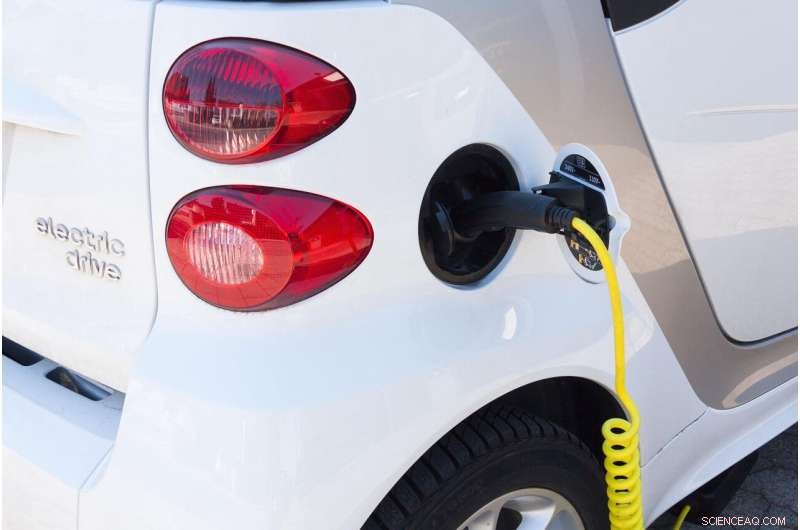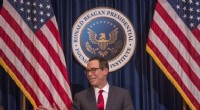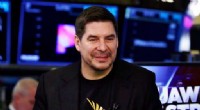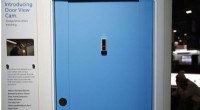
Wetenschap
Met een verbod op benzineauto's hoopt Californië de natie te leiden. Kan het leveren?

Krediet:Pixabay/CC0 Publiek domein
Het was het soort gedurfd, klimaatgericht initiatief waar Californië een reputatie voor heeft opgebouwd:een effectief verbod op de verkoop van nieuwe benzineauto's tegen 2035.
Maar de historische stemming van vorige week door de California Air Resources Board volgt op een aantal ingrijpende milieuacties van de staat die wisselend succes hebben gehad.
Nu ambtenaren de Californische autocultuur fundamenteel willen veranderen - en daarmee de grootste bron van planeetverwarmende koolstofemissies en luchtvervuiling verminderen - zeggen experts dat die eerdere initiatieven licht kunnen werpen op de vraag of het toonaangevende autoplan van Californië kan werken.
Luchtkwaliteit en smog
In Los Angeles wordt de dichte smog die ooit de stad verstikte tegenwoordig als folklore beschouwd. In het ergste geval, tussen de jaren 1950 en 1980, was de bijtende waas zo dik dat mensen slechts tot een stadsblok konden kijken. Het irriteerde de keel en longen van mensen en gaf ze bloeddoorlopen ogen. Destijds waren er volgens de Air Resources Board meer dan 200 dagen met ongezonde lucht per jaar.
Sinds die tijd is er enorme vooruitgang geboekt bij het terugdringen van smog en luchtvervuiling, grotendeels dankzij schonere auto's. De hoeveelheid smogvormende stikstofoxiden is de afgelopen twee decennia met meer dan 50% verminderd, waardoor de volksgezondheid aanzienlijk is verbeterd.
Maar de vooruitgang van Californië bij het bestrijden van luchtvervuiling is de afgelopen decennia gestagneerd en de staat is nog steeds de thuisbasis van de ergste luchtvervuiling in de natie. Het luchtbekken aan de zuidkust - Los Angeles, Orange, Riverside en een deel van de provincies San Bernardino - moet nog voldoen aan de federale gezondheidsnormen voor ozonniveaus, inclusief de oudste maatregel die in 1979 werd uitgevaardigd.
"Als je 70 jaar terugkijkt, hebben we geweldig werk geleverd", zegt Joe Lyou, voorzitter van de Coalition for Clean Air. "Als je terugkijkt op de afgelopen tien jaar, niet zo goed. En als je kijkt naar de wettelijke normen die eisen dat we zorgen voor gezonde lucht voor mensen om te ademen, doen we het helemaal niet goed."
De opwarming van de aarde heeft het probleem verder verergerd door het aanwakkeren van bosbranden en omstandigheden die meer bevorderlijk zijn voor smogvorming.
"Gevaarlijke luchtvervuilingsdagen zijn buiten de hitlijsten vanwege de groei van klimaatgedreven bosbranden", zegt Will Barrett, nationaal senior directeur voor pleitbezorging voor schone lucht voor de American Lung Association. "We weten ook dat ozon wordt gevormd wanneer uitlaatemissies en andere emissies zich vermengen in de atmosfeer op warme, zonnige dagen. We zien meer hitte, extremere weersomstandigheden, creëren betere omstandigheden voor de vorming van ozon en bedreigen de gezondheid op de grond. Deze zijn dubbele crises. Ze komen voort uit dezelfde bronnen:transportbronnen."
Maar het was het vermogen van de staat om een grote smogcrisis aan te pakken en op te lossen dat sommige experts de hoop geeft dat het ook het vervoer kan veranderen.
"De grootste aanspraak op roem van de Air Resources Board vóór het klimaattijdperk was zijn rol bij het creëren en afdwingen van de toepassing van katalysatoren en andere technologieën om de uitstoot van smogvormende vervuiling te verminderen, die de grote grootstedelijke centra in zowel de Bay Area verstikte. en aan de zuidkust", zegt Danny Cullenward, beleidsdirecteur bij de non-profitorganisatie voor klimaatonderzoek CarbonPlan. "Dus de Air Resources Board heeft als instelling echt een tandje bijgestoken, en was buitengewoon succesvol in eerdere decennia, bij het aanpakken van een enorm probleem dat te maken had met gecompliceerde technologieën, krachtige industrieën... en problemen die het dagelijks leven van mensen beïnvloedden."
Cap-and-trade
Een van de belangrijkste klimaatprogramma's van Californië, cap-and-trade, werd oorspronkelijk gelanceerd in 2006 met als doel de uitstoot van broeikasgassen door de staat tegen 2020 te verminderen tot het niveau van 1990. Het overtrof de verwachtingen en bereikte het doel zelfs vier jaar van tevoren.
In 2017 werd het programma opnieuw goedgekeurd met een veel ambitieuzer doel:de uitstoot van broeikasgassen verminderen tot 40% van het niveau van 1990 tegen 2030. Om daar te komen, gebruikt het programma een systeem van vervuilingskredieten waarmee grote koolstofuitstoters in wezen ongebruikte kredieten kunnen kopen en verkopen met als doel iedereen op of onder een bepaald totaal te houden.
Experts zeggen dat het maar een beetje werkte. Hoewel het programma een belangrijk onderdeel is gebleven van de klimaatstrategie van Californië, daalde de uitstoot in 2020 met ongeveer 11%, ver verwijderd van het doel van 40%. Bovendien verklaart dat aantal waarschijnlijk de emissiereducties die verband houden met het begin van de COVID-19-pandemie.
"Het bewijs is vrij duidelijk dat we niet op schema liggen voor dat doel, en de afhankelijkheid van dit programma is een groot deel van de reden waarom we niet op schema liggen", zei Cullenward.
Air Resources Board-woordvoerder David Clegern zei via e-mail dat de staat het beleid heeft om zijn doel te bereiken, "maar om daar te komen, moet er gecoördineerde actie worden ondernomen om het transport, kortstondige klimaatverontreinigende stoffen, elektriciteit en andere emissies te verminderen. 2030 bereiken."
"Het feit dat de staat zijn doel voor 2020 vier jaar eerder heeft bereikt en het succes van programma's zoals de Low Carbon Fuel Standard en de toevoeging van nieuwe programma's betekent dat de rol van cap-and-trade in de toekomst misschien kleiner zal zijn, maar dat zal worden geëvalueerd na de publicatie van het 2020-scopingplan later dit jaar", zei hij. Het scopingplan is een routekaart voor het bereiken van koolstofneutraliteit in de staat en wordt om de vijf jaar bijgewerkt.
Cullenward noted that the cap-and-trade program has some clear parallels to the advanced clean cars rule, including its plan to provide credits to auto manufacturers who sell more electric vehicles than they're required to. However, there are also some key differences that made him more optimistic about the gas car ban's prospects of success.
For one, he said, the Air Resources Board has historically had more strength as a regulator of mobile emission sources (such as cars) than of stationary ones such as factories and power plants, as evidenced by its earlier success with catalytic converters and smog reduction. What's more, while the industries regulated by cap-and-trade are "local, powerful and politically organized," the state has little in the way of combustion engine production.
Fossil fuels
Despite California's green reputation, it remains the seventh-highest oil producing state in the nation, extracting about 358,000 barrels per day, according to state data.
However, oil production has been declining for decades, and the California Geologic Energy Management Division, or CalGEM, reported that "more permits have been issued to plug and permanently seal existing wells than to drill new ones since 2019." The agency issued 564 new well permits in 2021, down from 1,917 in 2020 and 2,665 in 2019.
Some experts said that's not aggressive enough.
"This transition can't happen too slowly, because there is a climate crisis, and there are significant public health impacts on frontline communities," said Bahram Fazeli, director of research and policy at Communities for a Better Environment.
Although there are ambitions to phase out California's oil and gas production completely—most recently, Gov. Gavin Newsom set his sights on 2045—there has yet to be an official deadline such as the one for the gas car ban.
But the state has made some efforts to control or reduce oil production, including a proposed ban on new oil and gas wells within 3,200 feet of homes, schools and healthcare facilities. Newsom last summer also ordered a ban on new permits for hydraulic fracturing, or fracking, beginning in 2024.
"As we move to swiftly decarbonize our transportation sector and create a healthier future for our children, I've made it clear I don't see a role for fracking in that future and, similarly, believe that California needs to move beyond oil," the governor said at the time.
Fazeli noted that a recent study out of the University of Massachusetts Amherst found that achieving that transition by 2045 is feasible in California, though it would require a significant investment:About $138 billion per year, according to the study. But the fossil fuel industry is, by nature, opposed to such an existential threat, Fazeli said, and even passing "common sense" legislation such as the 3,200-foot buffer zone has proven challenging.
"California's economy is not different from other economies—the economy is a fossil fuel economy," he said. "So California is going through this growing pain of, how do we become a clean energy economy? How do we transition from a fossil fuel economy to a clean energy economy, and also provide good paying jobs? That's a key part of the puzzle."
Another part of the puzzle is balance, according to Kyle Meng, an associate professor of environmental economics at the University of California, Santa Barbara.
"When it comes to gasoline, you really need policies to deal with both the demand side—like the new car ban and subsidies for EVs—as well as the supply side, which is the production of oil," he said. "One without the other would lead to unexpected, adverse consequences."
For example, reducing demand without supply could mean California ends up exporting its excess oil, Meng said, while reducing supply too quickly could leave communities that rely on the industry in bad shape. In Kern County, one of the state's top producing regions, oil and gas extraction provide as much as 20% of the area's property tax revenue.
As in other sectors, equity remains a major concern, especially when it comes to the communities suffering the worst effects of oil and gas drilling, Meng said. But when considering the state's climate efforts thus far, he said there has been good progress.
"If you were to tell me that California would hit the state's 2020 greenhouse gas goals back in 2005, I wouldn't have believed it. But California did it," he said. "However, looking forward, the task for this decade is even more ambitious. The big open question is not just whether California can meet its 2030 greenhouse gas goals, but whether those goals are met in a way that doesn't exacerbate existing inequities across the state."
Vehicle miles traveled
Although phasing out gas-powered cars is one of the state's greatest priorities, that alone won't be enough. Driving habits must change, too, if the state expects to achieve carbon neutrality.
The state climate plan depends on motorists driving at least 12% fewer miles by 2030, and no fewer than 22% by 2045.
Since the advent of the automobile and the construction of the highway system, large cities like Los Angeles and San Francisco have become car-centric. Today, around 75% of daily commuting trips consist of one person driving with no passengers—a practice that remains the primary mode of transportation in California.
"Highway building and sprawl go hand in hand," said Susan Handy, a researcher at UC Davis who has studied strategies to reduce automobile dependence. "That's true in California, and it's also true everywhere else. When we built highways, it made it possible to develop farther from city centers than ever before. And now we're in a situation where we've got these sprawling development patterns and it makes it very hard to get around by means other than the car."
As the state's population has risen and more cars are on the road, state officials funded highway construction and expansion to ease congestion, which ironically fostered more driving.
The only major significant decreases in miles driven occur during economic downturns and, recently, with the onset of the COVID-19 pandemic in 2020 as more people have worked remotely. However, driving has rebounded to pre-pandemic levels.
Public policy strategy to reduce driving has historically included gas tax hikes or tolls, which could serve as a deterrent. But the state could do better at investments and incentivizing other forms of transportation like biking and mass transit, Handy said.
Much of California's plans have depended on providing financial incentives to trade in gas-powered cars for zero-emission vehicles. But some state officials have requested the state look into how driving behaviors might change if the state invests more in mass transit.
"I think it's tough, because we're a car culture, right?" Air Resources Board chair Liane Randolph said at a meeting in June. "We know how to help people buy cars. What we don't know is how to help people change the culture so that they are able to ride public transit in a way that's economical and equitable and efficient for them to get to work and to school and wherever they need to go."
Infrastructure
Infrastructure will play a huge role in California's transition away from gas cars, multiple experts said. Charging stations will be needed to help power electric vehicles, and electricity will be needed to power those charging stations, among myriad considerations.
So far, the state has established many goals to help get there, including plans to construct at least 250,000 public vehicle charging stations by the middle of the decade; 10,000 of which should be fast chargers, according to the California Public Utilities Commission. The state also plans to require landlords of multifamily housing units to provide residents with a means to charge electric cars, though those details are still being worked out.
And it's not only personal vehicles that will need the stations, but also the heavy-duty trucks that transport goods throughout the state every day. The twin ports of Los Angeles and Long Beach have the goal of being serviced exclusively by zero-emission trucks by 2035, but they have a long way to go:Only 35 of the 22,000 trucks that serve the port complex are "electric," "battery electric" or "hydrogen fuel cell," according to data from their clean truck program.
Though the state has made efforts to streamline the permit process for charging stations, mapping tools show huge gaps in their locations, particularly in inland Central California and far Northern California.
"We're nowhere close to where we need to be on infrastructure, especially charging infrastructure for electric vehicles, electric trucks, electric buses, electric off-road equipment," said Lyou, of the Coalition for Clean Air. "And it's emerged as the most challenging thing we have to do."
Another part of the problem is that recharging the batteries of electric cars and trucks could also lead to increased greenhouse gas emissions, depending on where that energy is coming from.
"If you're talking about California trying to move its emissions from gasoline cars into EVs, you're talking about probably doubling the amount of electricity demand on the grid," said Meng, of UC Santa Barbara. "Where's that going to come from? You could imagine large utility-scale solar in places like Kern County, but with the laws as they're written now, it's very hard for Kern County to get property tax benefits from a solar farm than it could from oil drilling." + Verder verkennen
California phasing out gas vehicles in climate change fight
2022 Los Angeles Times.
Verdeeld door Tribune Content Agency, LLC.
 Tellurium maakt het verschil
Tellurium maakt het verschil De verschillen tussen zout en suiker
De verschillen tussen zout en suiker  Wat is een ionische binding?
Wat is een ionische binding?  Nieuw gesynthetiseerde schimmelverbinding kan een zelfvernietigingsknop voor kanker inschakelen
Nieuw gesynthetiseerde schimmelverbinding kan een zelfvernietigingsknop voor kanker inschakelen Baanbrekende kwantumchemietechniek voor computationeel ontwerp en optimalisatie van organische fotofunctionele materialen
Baanbrekende kwantumchemietechniek voor computationeel ontwerp en optimalisatie van organische fotofunctionele materialen
 Typen spiders: Black With White Dots
Typen spiders: Black With White Dots NASA begint laatste jaar van poolijsmissie in de lucht
NASA begint laatste jaar van poolijsmissie in de lucht Flat Earthers versus sceptici over klimaatverandering:waarom complottheoretici elkaar blijven tegenspreken
Flat Earthers versus sceptici over klimaatverandering:waarom complottheoretici elkaar blijven tegenspreken Hoe lang zou het duren om Auckland te ontvluchten als een vulkaan op het punt stond uit te barsten?
Hoe lang zou het duren om Auckland te ontvluchten als een vulkaan op het punt stond uit te barsten? Slechtste juni voor Amazone-bosbranden in Brazilië sinds 2007:gegevens
Slechtste juni voor Amazone-bosbranden in Brazilië sinds 2007:gegevens
Hoofdlijnen
- Wetenschappers zeggen dat een One Health-benadering van plantgezondheid van vitaal belang is voor het bereiken van duurzame wereldwijde voedselzekerheid
- Kan slapen me gelukkig maken?
- Industrieel gebruik van Pepsin
- Hoe DNA te maken met pijpreinigers & pony kralen
- De patronen van klimaatverandering
- Geavanceerde beeldvorming werpt licht op immuunontsnapping van vormveranderende schimmel
- Geheugenhack:doe wat aerobics vier uur na de les
- Wat is de structuur van stamcellen?
- Hoe een moleculaire schaar ziekten kan repareren en DNA
 Wat is de suikerwaterformule voor zoemende vogelvoeders?
Wat is de suikerwaterformule voor zoemende vogelvoeders?  Wetenschappers testen medicijnafgifte door nanodeeltjes bij honden met osteosarcoom
Wetenschappers testen medicijnafgifte door nanodeeltjes bij honden met osteosarcoom In de knoop:nieuwe inzichten in plasmagedrag focussen op draaien en keren
In de knoop:nieuwe inzichten in plasmagedrag focussen op draaien en keren Zonnecellen printen
Zonnecellen printen Klimaatverandering zal de toekomstige beschikbaarheid van water voor waterkracht en openbare watervoorziening in Wales beïnvloeden
Klimaatverandering zal de toekomstige beschikbaarheid van water voor waterkracht en openbare watervoorziening in Wales beïnvloeden Online zwendel in Puerto Rico gericht op meer dan $ 4 miljoen te midden van crisis
Online zwendel in Puerto Rico gericht op meer dan $ 4 miljoen te midden van crisis Innovatieve magneten voor nieuwe energieterugwinningsversneller
Innovatieve magneten voor nieuwe energieterugwinningsversneller Astronauten gekozen voor SpaceX, Boeing capsule testvluchten
Astronauten gekozen voor SpaceX, Boeing capsule testvluchten
- Elektronica
- Biologie
- Zonsverduistering
- Wiskunde
- French | Italian | Spanish | Portuguese | Swedish | German | Dutch | Danish | Norway |

-
Wetenschap © https://nl.scienceaq.com






